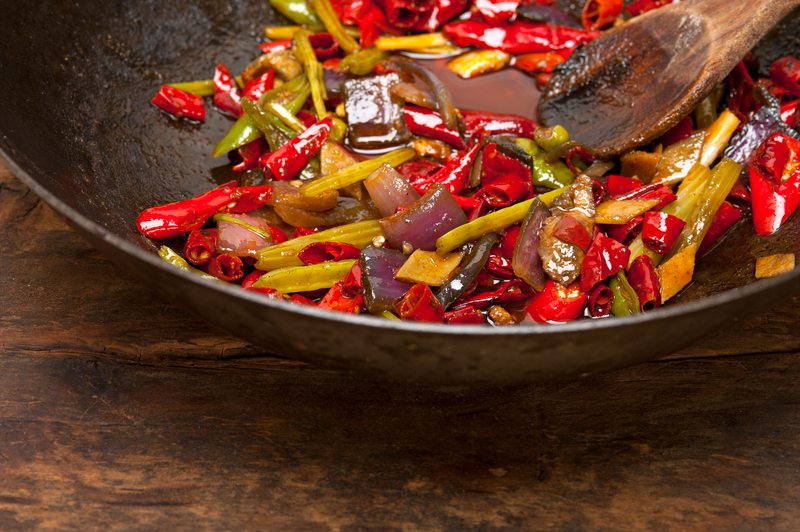Properly Seasoning a Wok – Method 1

Properly Seasoning a Wok – Method 1
By Norm Huffnagle
I enjoy Oriental cooking. I especially enjoy cooking Oriental cooking in a well-seasoned wok. Not only is it the ultimate “One Pan” cooking experience, the cleanup is easy, quick, and convenient.
I repeat: To achieve that level of performance, one must have a well-seasoned wok.
My other article in this series: “Properly Seasoning a Wok – Method 2” spells out an advanced way to season a wok, but it is not entirely suitable for all. The method does generate a considerable amount of smoke, which in a small apartment could be uncomfortable (smoke alarms are definitely noisy little wonders). I did try using an outdoor grill, and had moderate success.
This more traditional method of seasoning follows an older, more conventional procedure that you may find more to your liking. I use this with both high carbon and stainless steel woks. The purpose is to create a hard carbon coating on the inside of the wok that is virtually non-stick.
Warning: this method only works with conventional woks. Don’t use it with non-stick woks. You will ruin it!
The Traditional Method:
- If the wok is received with wooden handles removed, do not attach until you’ve completed seasoning the wok. If the handles are attached, the procedure is a little more complicated. Wash the newly acquired wok inside and out with hot, soapy water. A good detergent is recommended, along with a stiff cleaning pad. Vigorously scour the inside to remove any residual oils that may be used to manufacture your wok. Dry the wok thoroughly with paper towels. Place in a preheated 250�F. oven until too hot to touch. That will force all the water out of the metal’s pores.
-
Wipe the inside of the wok with a paper towel or cloth dipped in clean vegetable oil, putting a thin coat on the metal. Place wok in a 400� F. oven for 1 hour.
-
Repeat Step #2 at least twice more.
-
Place wok on stovetop and let cool completely. Then using only hot water, rinse out the wok, removing any residual oil. Wipe dry with paper towels and coat the interior with a thin film of oil. Wipe off any excess. Attach the handles.
-
Never scour a wok’s insides with soap and a pad.
-
Use only hot water and a bamboo whisk to clean the wok. Use the whisk to break loose any residual stuck foods, but don’t tear the black coating off!
-
Always wipe your wok dry with paper towels and add a coating of oil.
Note: a well-seasoned wok looks black inside! The more you use it, the blacker it will become.
Congratulations! Your wok is now seasoned!
Norm Huffnagle enjoys sharing exotic recipes with friends and family. Norm specializes in ancient Chinese dishes, various flavors of Chilis, contemporary Mediterranean cuisine, and Special Occasion cookbooks. Check out his latest Chinese cookbook, “Chinese if You Please: Delicious, Simple, Fresh Wok and Stir-fry from Master Xia Zhou Chiang “, available on Amazon/kindle. The link is: https://amzn.com/B015BUHO9I.
Blow your mind: Peruse my avatar’s Author Page on Amazon to see what else is available: http://www.amazon.com/-/e/B014LGT3XI
Article Source: http://EzineArticles.com/expert/Norm_Huffnagle/721035
http://EzineArticles.com/?Properly-Seasoning-a-Wok—Method-1&id=9832149







